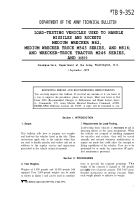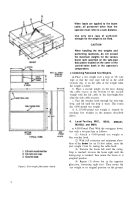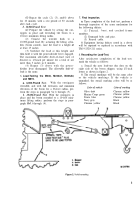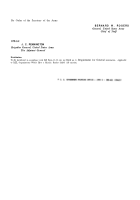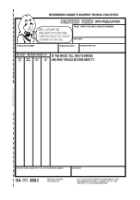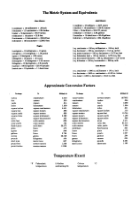TB-9-352 - Page 2 of 7
When loads are applied to the boom
cable, all personnel other than the
operator must retire to a safe distance.
Use only wire rope of sufficient
strength for the weight to be lifted.
CAUTION
When handling the test weights and
performing load-tests, do not exceed
the maximum weights for the various
boom radii specified on the safe-load
data plates located on the cover of the
control-valve bank in the operator’s
compartment.
Figure1. Test-weight fabrication details
4.
Combining Fabricated Test Weights.
a.
Place a test weight over a loop of 5/8 wire
rope so that the wire rope will lie in the cable
recesses (fig. 1) on the sides of the weight when
the weight is lifted.
b. Place a second weight on the first, alining
the cable recess in the bottom of the second
weight with the lift cable of the firstweight.Also
aline the side cable recesses.
c. Pass the wrecker hook through the wire-rope
loop, and lift until the loop is tense. This forms
the 4,000-pound test weight.
d. A 10,000-pound test weight is formed by
stacking five weights in the manner described
above.
5.
Load-Testing M62,
M543,
M543A1,
M543A2, and M816.
a.
4,000-Pound
Test.
With the outriggers down,
test with a two-part line as follows:
(1) Attach a 4,000-pound test weight to
the wrecker hook.
(2) With full extension and minimum eleva-
tion of the
boom
for an 18-foot radius, raise the
test weight 2 feet by raising the cable hook.
(3) Traverse the boom left until the swing-
stop is reached; traverse the boom right until the
swing-stop is reached; then return the boom to it
original position.
(4) Repeat (3) above but in the opposite
direction, traversing right first. Then return the
test weight to its original position on the ground.
2
Back to Top

